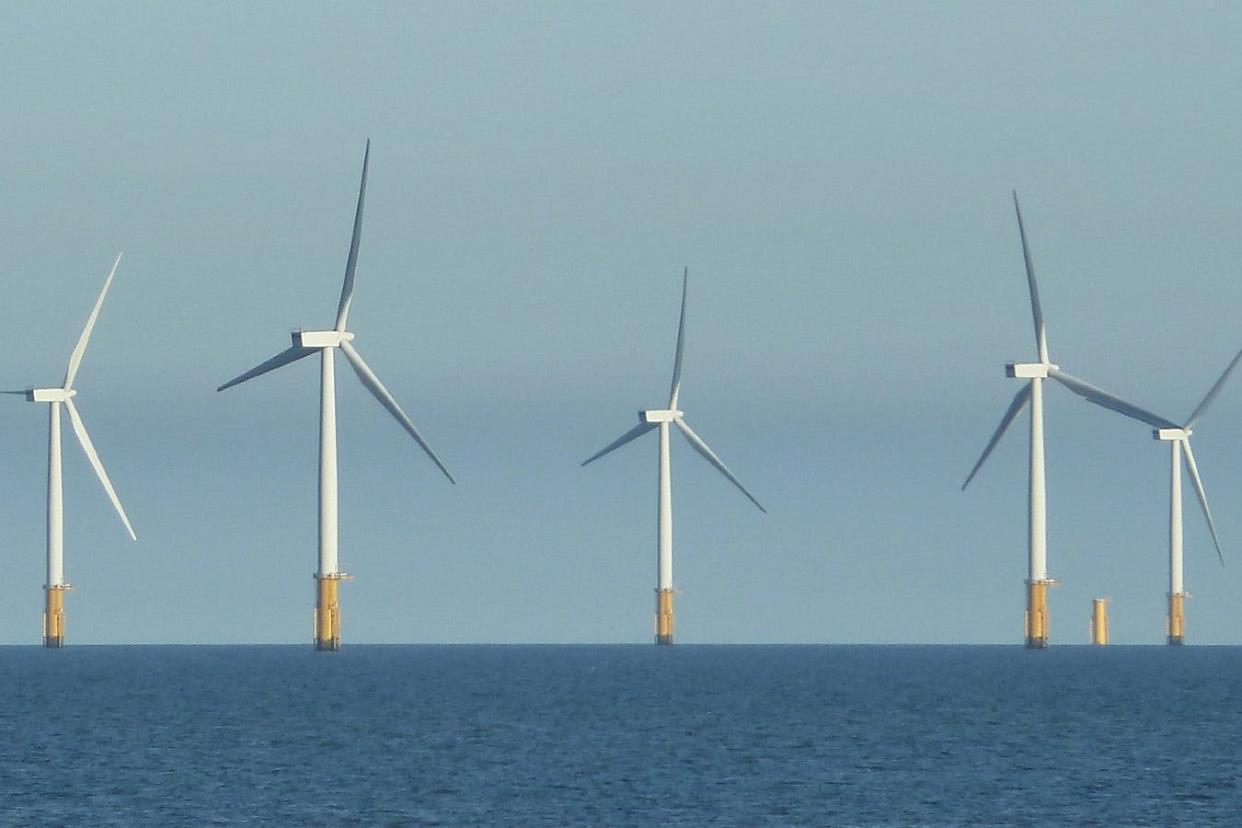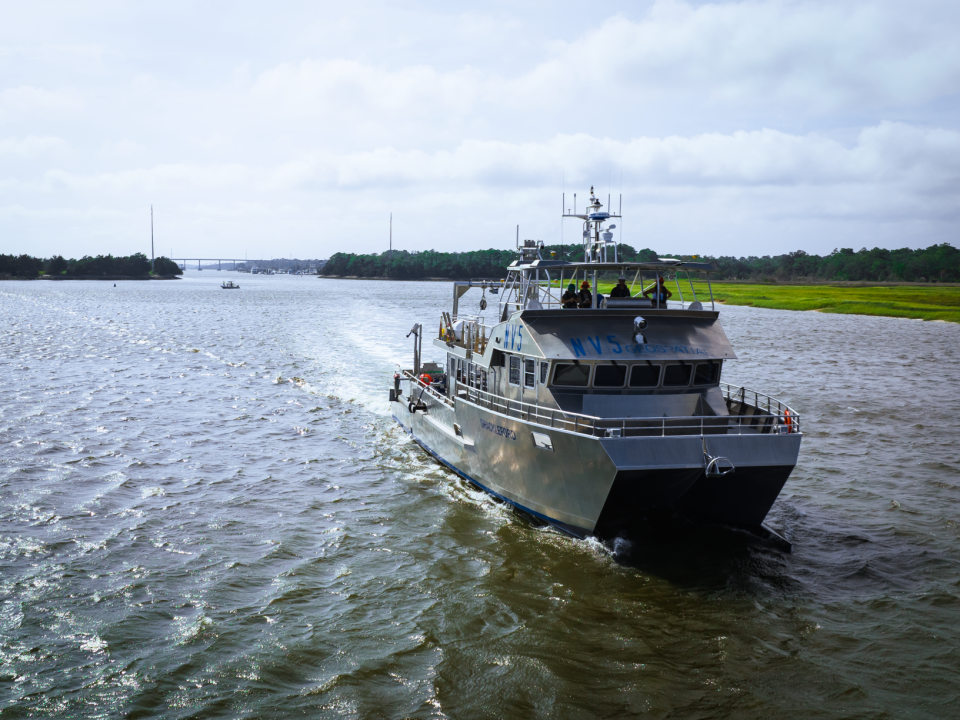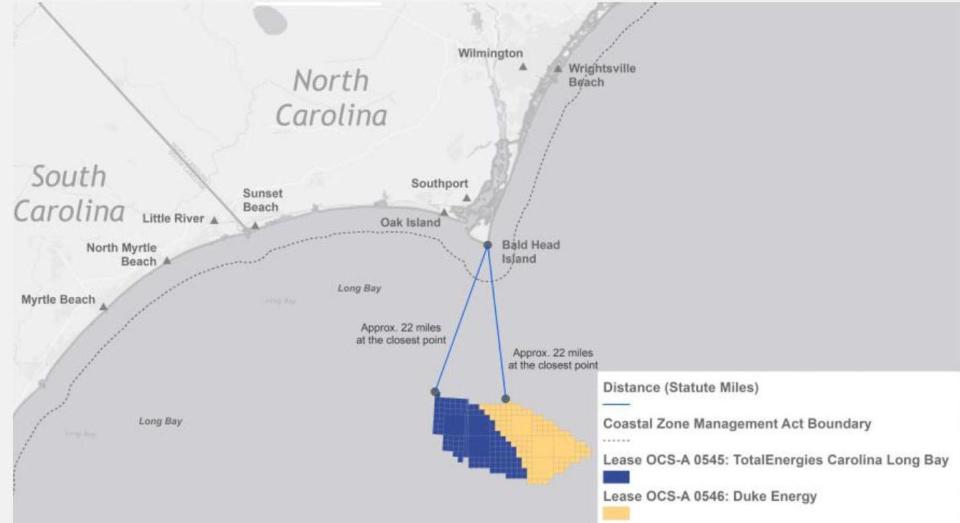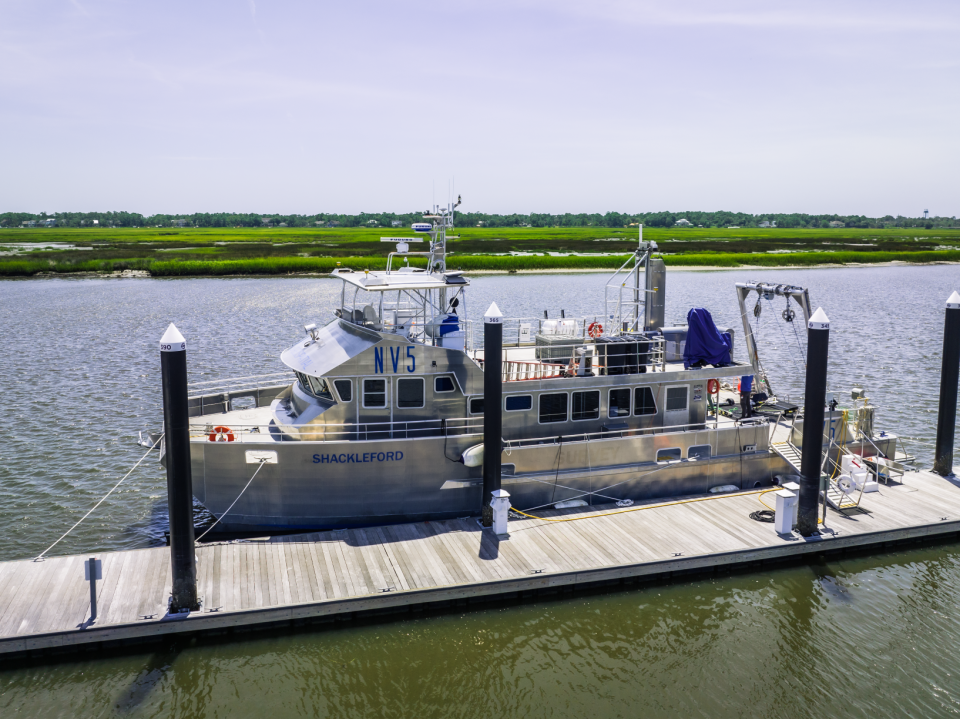With an eye out for whales, survey work starts on offshore wind farms south of Wilmington

There are still plenty of hurdles to overcome, including lots of federal and state regulatory approvals, making sure the projects are economically viable, and securing customers for the power the giant turbines will produce.
But a pair of offshore wind farms proposed about 22 miles south of Bald Head Island took a major step forward this month with the first survey work for the projects.
Sailing from Southport, a research vessel owned by Geodynamics spent recent days mapping the seafloor to help identify the best locations for the placement of scientific buoys. The surveys will be used to find mooring areas for three buoys that will be the least environmentally intrusive while also allowing the collection of data to help direct the subsequent development of the offshore turbines that will rise more than 500 feet from the ocean's surface. The buoys also will be equipped with sensors to detect marine life, including birds.
TotalEnergies Renewables USA and Cinergy Corp., a non-regulated subsidiary of Duke Energy, spent a combined $315 million to lease nearly 140 miles of ocean from the federal government for the pair of huge wind farms. Once fully up and running, probably in the early 2030s, the wind farms could produce enough power to supply 750,000 homes.
With the two wind farms adjacent to each other, the companies have decided to work together to help limit costs and take advantage of economies of scale. But first the companies have to determine where to place the giant windmills.
"This is just initial information data gathering," said Elizabeth Bennett, spokesperson for TotalEnergies, adding that the buoys will likely be deployed next year. "And while these projects are still in their very early stages, we see this as an opportunity for the Carolinas to take advantage of the millions of dollars in investments these projects can bring."
VISUAL EYESORES? Wind turbines off the Brunswick coast: What would they look like?
Watching out for whales
Offshore wind is seen by clean energy advocates as a key component in helping governments de-carbonize their energy grids by reducing their reliance on dirty, greenhouse gas-spewing power sources like coal and natural gas. That includes North Carolina, which has a stated goal of reducing its 2005 level of carbon emissions by 70% by 2030.
Offshore wind farms, however, have their critics. The projects are very capital intensive to build, although those costs drop dramatically once the turbines are up and running. Some coastal residents are also concerned that the giant windmills will damage their ocean "viewscapes," and local officials fear the visual pollution also could harm the region's vital tourism industry. Industry officials say the giant wind turbines will be next to invisible on the horizon.

But perhaps the biggest concerns surround the wind farms potential impact on marine life, particularly the highly endangered North Atlantic right whale that migrates through North Carolina's near-shore waters. A recent report by the National Oceanic and Atmospheric Administration (NOAA) estimated only 338 whales remain, a decrease from the 2021 estimate of 368 individuals. Ship strikes and entanglements with fishing gear are the top dangers for the highly endangered animals.
Bennett said to help limit interactions with marine life the R/V Shackelford, the survey vessel, had a dedicated observer on board. It also voluntarily operated at a maximum speed of 10 knots to allow maximum time for proactive measures if a whale or other marine mammal was spotted. In addition, no equipment was used during the survey work that had sound frequencies harmful to marine life.
The Natural Resources Defense Council (NRDC) has praised the companies for the protective measures they've put into place to limit interactions with the right whales.
SHARING SPACE For highly endangered North Atlantic right whales, offshore wind brings a lot of unknowns
Balancing cost with economic benefits
The pair of wind farms planned for Long Bay south of Brunswick County will join another offshore wind farm planned for roughly 27 miles off Kitty Hawk on the Outer Banks.
While North Carolina has space and the wind resources for more offshore facilities, that idea appears cloudy right now.
The U.S. Bureau of Ocean Energy Management (BOEM) this month rejected proposals for two new wind farm sites off the Outer Banks due to concerns raised by the Pentagon that the wind farms could interfere with military aviation training.

Governor Roy Cooper, a big proponent of renewable energy, called the decision “extremely disappointing.” In 2021, Cooper signed an executive order that doubled down on the state's commitment to offshore wind power, with goals of 2.8 gigawatts (GW) off the North Carolina coast by 2030 and 8 GW by 2040 − enough to power roughly 2.3 million homes.
But a bigger speed bump to more offshore wind could be the state's carbon-reduction plan, a roadmap on how the state's will reach its aggressive goals to reduce emissions and reach a carbon-neutral energy sector by 2050.
Although the plan has to be approved by the N.C. Utilities Commission, it is Duke Energy that largely lays out the way forward as the largest utility in the state. In its latest version of its plan, which is reviewed every two years, the utility's favored proposal retains an option for adding up to 1.6 GW of offshore wind by 2035.
GOING GREENISH With more gas and renewables, Duke Energy wants to meet NC carbon-reduction goal by 2035
Katharine Kollins, president of the Southeastern Wind Coalition, a nonprofit that advocates for wind energy development in the Southeastern U.S., thinks the company should be looking to do more.
"It made a case for offshore wind, but not as strongly as we'd like to see," she said of Duke's plan.
While offshore wind's upfront capital costs can be substantial, Kollins said so are the potential economic development benefits for North Carolina of tapping into a largely undeveloped business sector that holds huge potential to grow as more and more states turn to offshore wind to meet their carbon-reduction goals. Without taking into account those economic benefits, you only have the carbon-reduction benefits from a power sector that's still immature and expensive when compared to solar and other renewables and will likely stay that way for years to come.
"Yes, there are significant capital expenses right now," Kollins said. "But offshore wind comes with benefits that we're not going to get with anything else."

Reporter Gareth McGrath can be reached at GMcGrath@Gannett.com or @GarethMcGrathSN on Twitter. This story was produced with financial support from 1Earth Fund and the Prentice Foundation. The USA TODAY Network maintains full editorial control of the work.
This article originally appeared on Wilmington StarNews: Offshore wind farms Wilmington Brunswick County survey work starts NC

